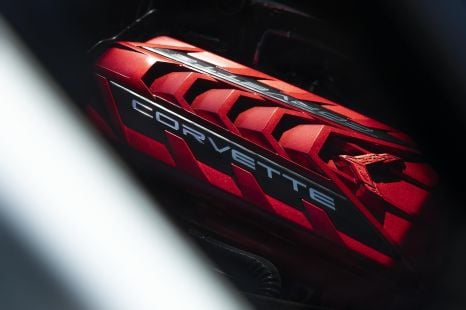

Damion Smy
Chevrolet Corvette Grand Sport could get 6.7-litre LS6 V8 - report
17 Hours Ago
On track the 911 GT3 is peerless. On road it’s almost no different to driving a regular Porsche 911 – only it's better.
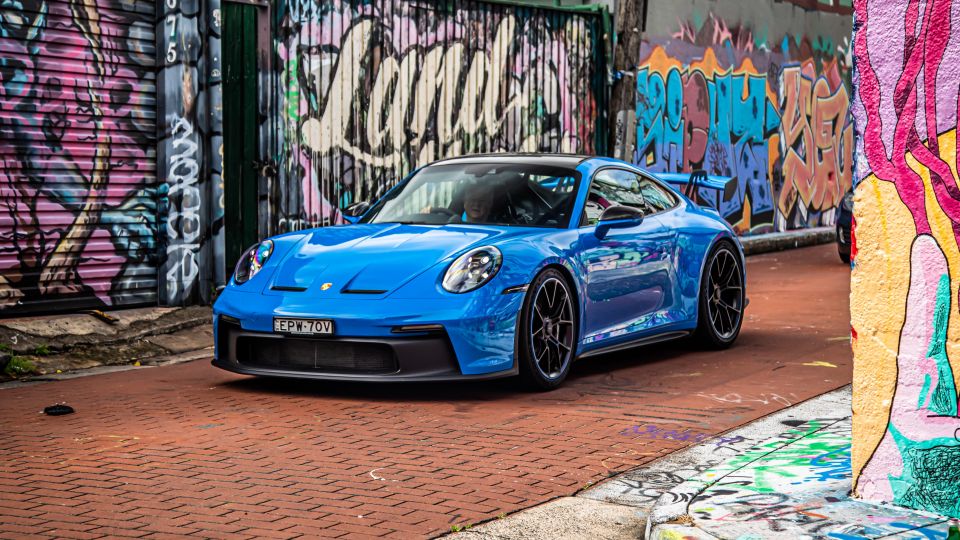


Quickly see how this car stacks up against its competition. Select any benchmark to see more details.
Where expert car reviews meet expert car buying – CarExpert gives you trusted advice, personalised service and real savings on your next new car.
I keep reiterating to any like-minded enthusiast who’ll listen; no other production-series sports car on the planet that can take hour-upon-hour of non-stop track abuse at full noise then be casually driven back home without a single mechanical or tech issue throughout the entire day – that’s what a Porsche 911 GT3 can do straight out of the box.
Remember, this is a car we already know is faster than the previous GT3 RS around the famed Nürburgring Nordschleife, where it clocked a 6:59.927-minute lap.
This annihilated its GT3 predecessor’s performance by a brain-bending 17.5 seconds: a lifetime in the motorsport world.
Not only is the latest 911 GT3 the most complete naturally-aspirated Porsche GT car I’ve ever driven, it’s also the most feared and respected by rival makes. There’s simply nothing to prove.

With the latest GT3, like every other iteration before it, you’re getting something very special: bespoke even.
Take the engine. It’s still a naturally-aspirated 4.0-litre flat-six, but this one is a pure-bred racing engine out of the Porsche GT3 Cup racer with identical outputs.
That power unit is pretty much bulletproof too, when you consider the GT3 Cup car’s engine only needs a maintenance check after 100 hours of track time.
That alone is simply extraordinary given the loads the engine is subjected to race after race and lap after lap.
However, is this a car you can live with seven days a week, or is it simply too hardcore to be driven as a daily?
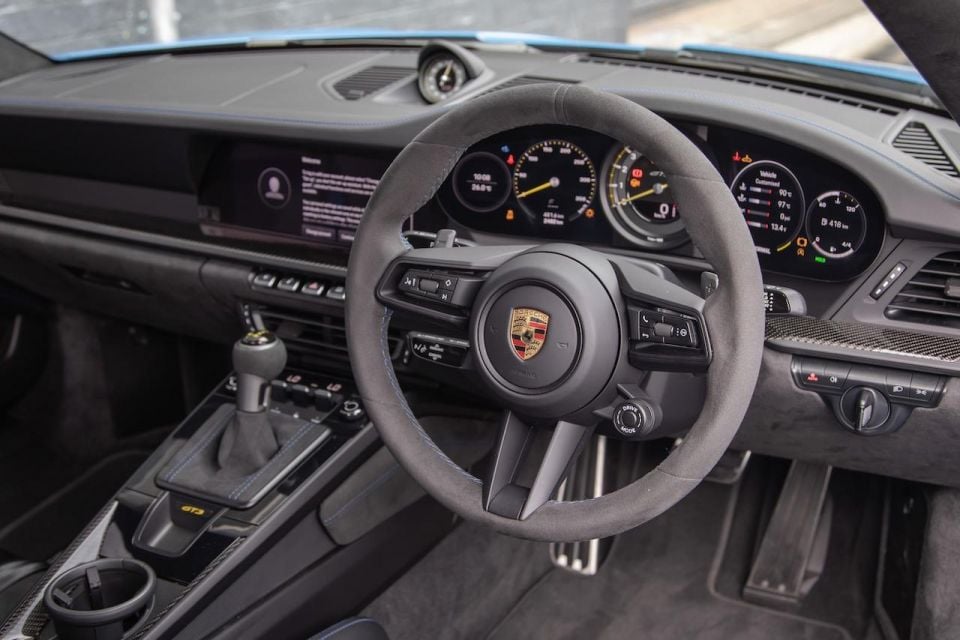
That’s the question I’m asking myself at this very moment, because I don’t want to be one of those owners who only takes their GT3 out on special occasions – that’s not me.
I’m just as happy to run down to my local for the morning brew as I am going full-tilt on my favourite twisty road.
Naturally, this whole scenario is predicated on the basis I can slip back into 911 ownership after farewelling my own Carrera S earlier this year.
It assumes we’ll take the eventual downsizing journey that’s bound to occur once the youngest kid has finished her studies and is gainfully employed, thereby freeing up fresh resources.
That being the case, there are a few key decisions GT3 buyers need to make – colour being paramount.
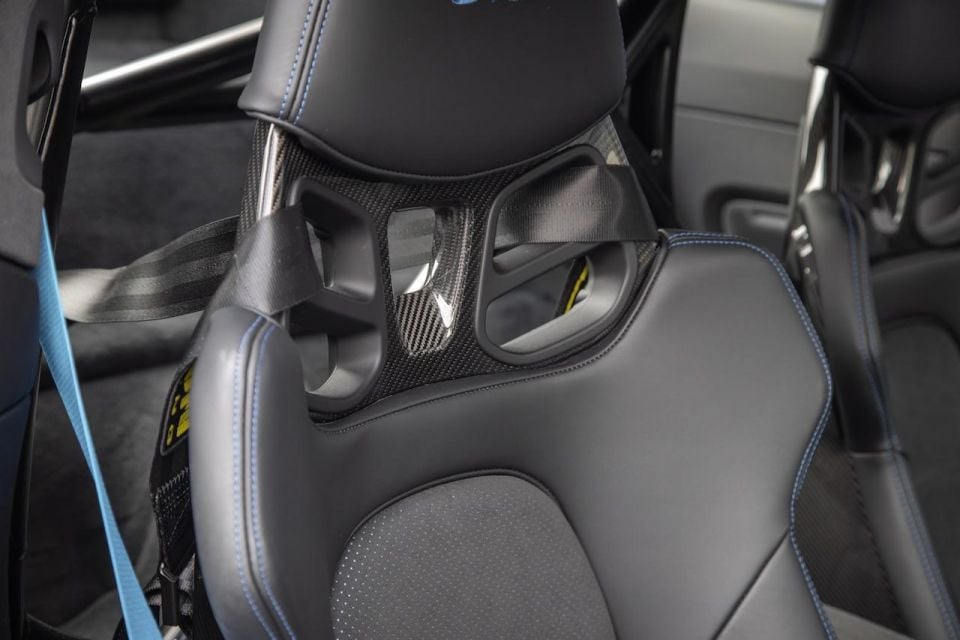
I’m still utterly besotted by the Shark Blue paint job that adorned all three test cars in pit lane at Sydney Motorsport Park last year, where we got the opportunity to comprehensively flog the car on track.
For me, it’s the pick of the new GT3’s palette but I’d take a good hard look at GT Silver Metallic too, whereas two of my favourite 911 hues, Lava Orange and Python Green seem like more of a match with the positively wild upcoming GT3 RS that sports a truly massive active rear wing.
You then need to decide on the type of seats you want in your GT3 – a more difficult decision than you might imagine and one you may regret regardless of what you choose.
Let me explain. There’s an overriding temptation to stick with the exxy full-carbon buckets fitted to our tester, complete with race-ready levels of bolster, but enough padding to be classed as comfortable – but they’ll also cost you an arm and a leg for the privilege.
The other more pragmatic approach is to just go with the regular Sports Seats Plus for long-range comfort as well as pain-free entry and exits.
Aesthetically, they can’t hold a candle to the carbon pews, but if we’re talking about using the GT3 a few times a week, this balance between comfort and support is surely a good compromise if you’re mostly confined to the ‘burbs.
Still, the look and feel in a GT3 is a crucial part of the whole driving experience, so I guess it just means more focus on your core and triceps at the gym in order to have the strength to heave yourself out of the those magnificent buckets in a somewhat dignified manner.
The GT3 has always been hardcore, with a lineage that stretches back to the 1973 911 Carrera RS.
This was before the official GT3 badge was applied to the 996.1 version which came along in 1999 as a homologation special for the cars competing in the FIA GT3 Cup.
It’s been that way ever since, with the likes of the Carrera Cup which is a global one-make series for 911 GT racers. It’s also why the GT3 has always offered less comfort than regular 911 models.
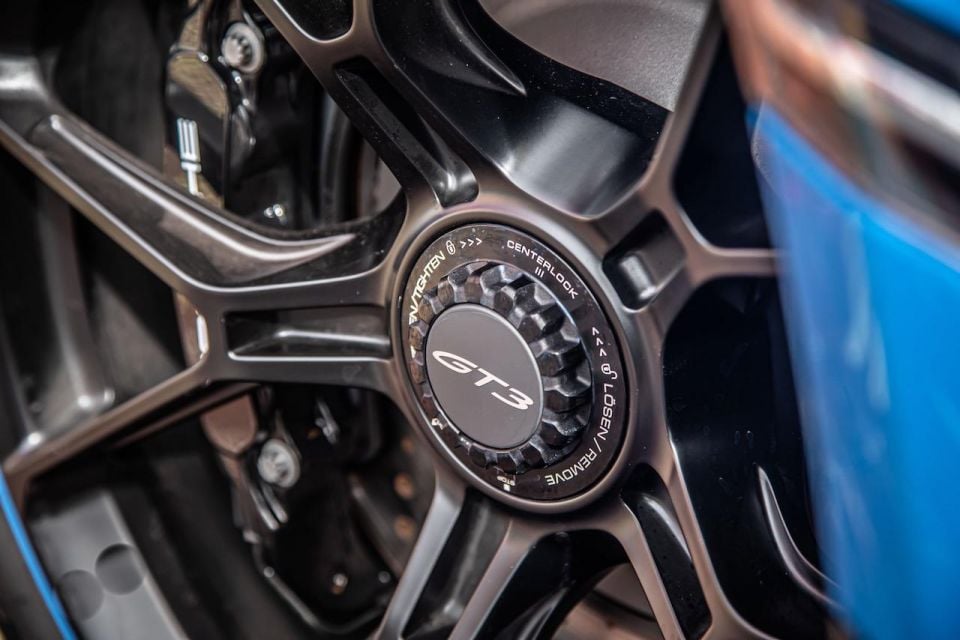
Those leading the Porsche’s GT program and their never-wavering obsession with more power, less weight and the very latest go-fast tech and mechanical componentry, means comfort is a secondary consideration.
Even on track, smacking the occasional curb, the 992 GT3 felt different. More compliant, but at the same time even more tied down with bulletproof body control and four-wheel steering.
Nothing seemed to bother it and yet we were hitting higher speeds and lap times were not far off the current crop of Supercars racers.
Still, the big question remained – can I use the new 911 GT3 as a daily, or at least a few times a week in between press car loans without feeling like I’m driving a full-blown race car, notwithstanding the trademark rear wing?
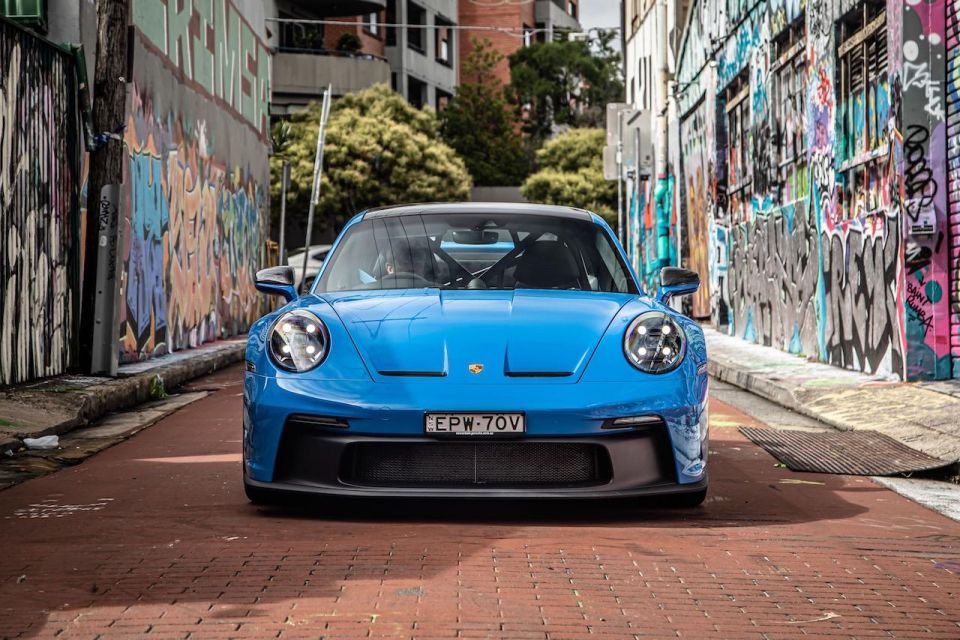
The 2022 Porsche 911 GT3 range has effectively one price for all variants; $369,600 excluding on-road costs, regardless whether you choose the seven-speed PDK or six-speed manual transmission.
If you prefer a more subtle approach to your 911 GT3 ownership, there’s the 911 GT3 with Touring Package for precisely the same $369,600 outlay – again with either transmission.
The Touring Package dispenses with the rear wing for an automatically extending rear spoiler instead, as well as being equipped with a six-speed manual as standard, but with the seven-speed PDK available as a no-cost option.

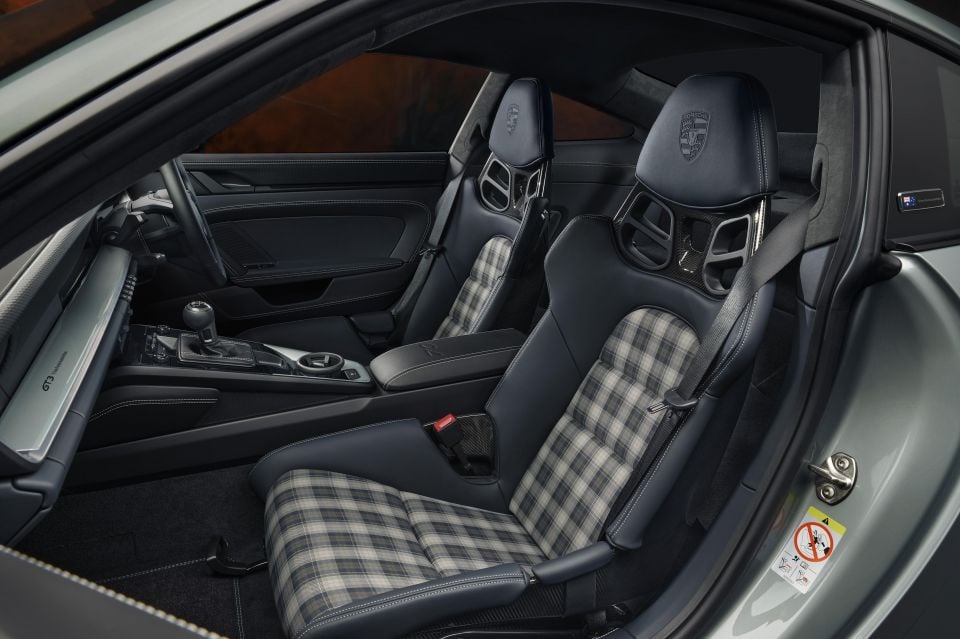
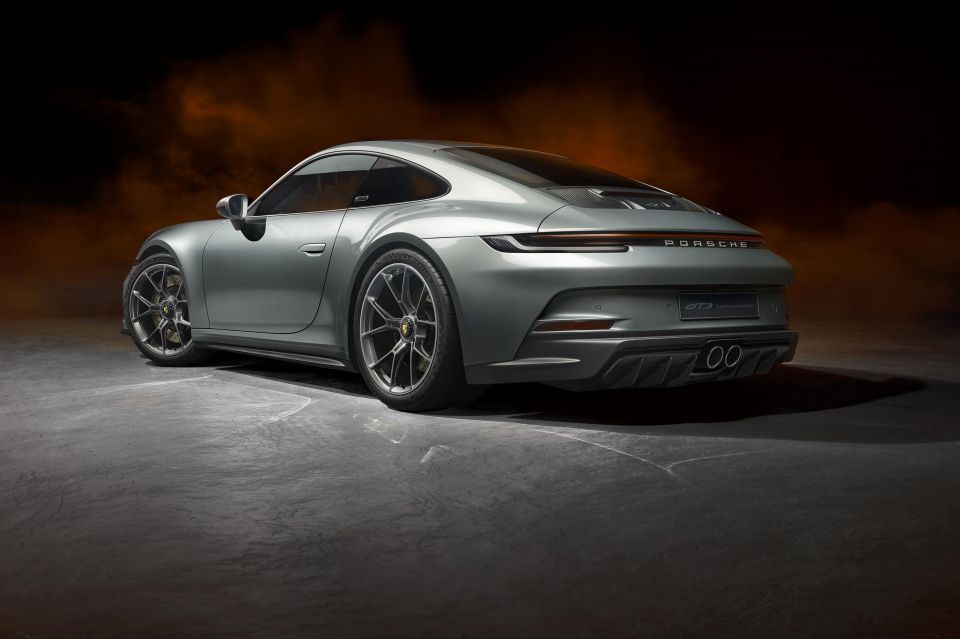
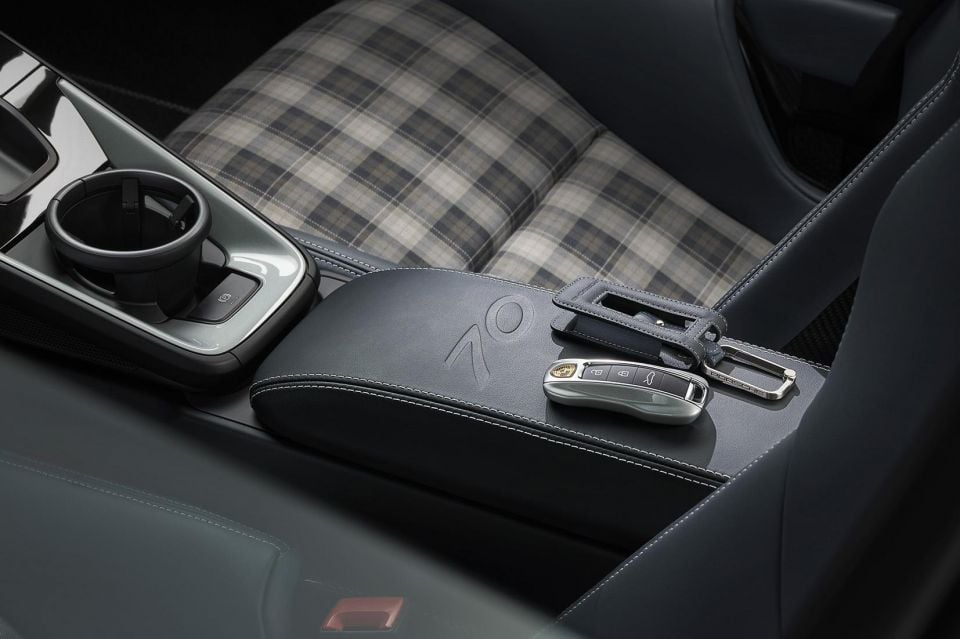
While the GT3 carries an awful lot of cachet given its homologation lineage, not to mention the next-level engineering that goes into the entire car from the ground up, you can get a 911 Carrera GTS from $314,800 plus on-roads which matches the GT3 in the 0-100km/h sprint time (3.4s).
For those buyers keen for something properly exclusive in the GT3 range, there’s also the 911 GT3 70 Years Porsche Australia Edition, based on the GT3 with Touring Package but with a comprehensive list of additional and unique features.
It’s a market-specific edition designed in collaboration with the Style Porsche design team, the Porsche Exclusive Manufaktur customisation department and Porsche Cars Australia to celebrate the first two Porsches imported into Australia by Norman Hamilton 70 years ago.
Priced from $494,300 plus on-roads, all Editions have already been allocated to customers, which is hardly surprising given the current worldwide thirst for any limited-edition 911, regardless of the price tag.

Buy your new car without the stress. It's fast, simple and completely free.

Great service from Travis and team, second time I have used this business would not hesitate to recommend them to anyone
Craig C.
Purchased a Ford Ranger in Sunshine Coast, QLD
CarExpert helped Craig save thousands on his Ford Ranger, now let us save you on your next new car.
Find a dealIt’s remarkable to me to find the interior of the latest 992-generation 911 is immediately familiar to someone who may not have driven one since the original 911 T or latter 911 SC models, despite the contemporary makeover that includes most of the latest tech that’s expected by new car buyers these days.
It’s testament to the various custodians of the 911 nameplate who have stayed the course with an unyielding obsession over decades.
There’s no other car like it in automotive history, and we can only bow to these people and their unyielding passion to keep things as familiar as possible despite the huge leap in technology.
It’s why the 911 remains the most iconic sports car ever made, with the GT3 as one of Porsche’s most sought-after models.
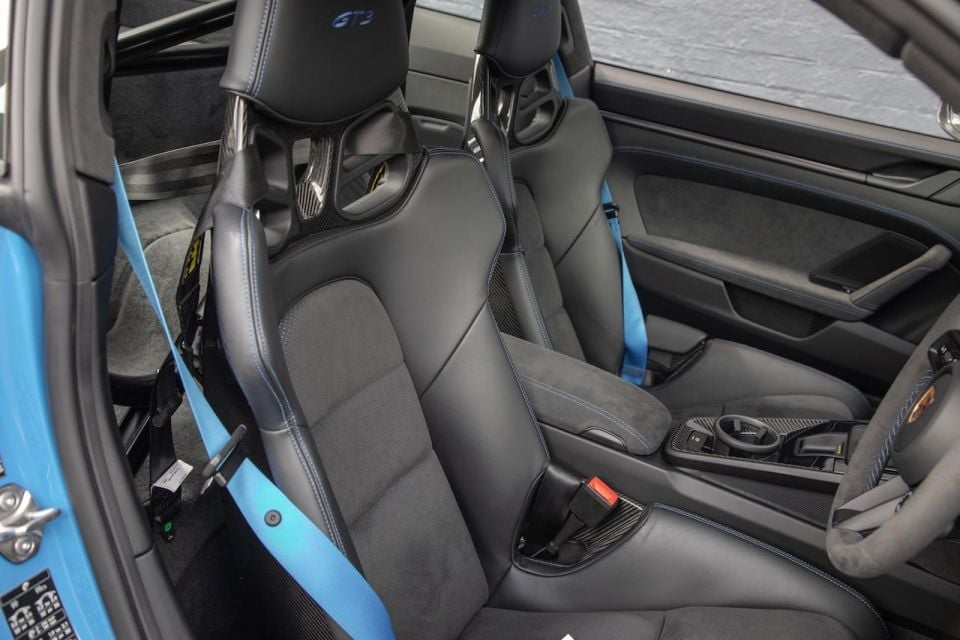
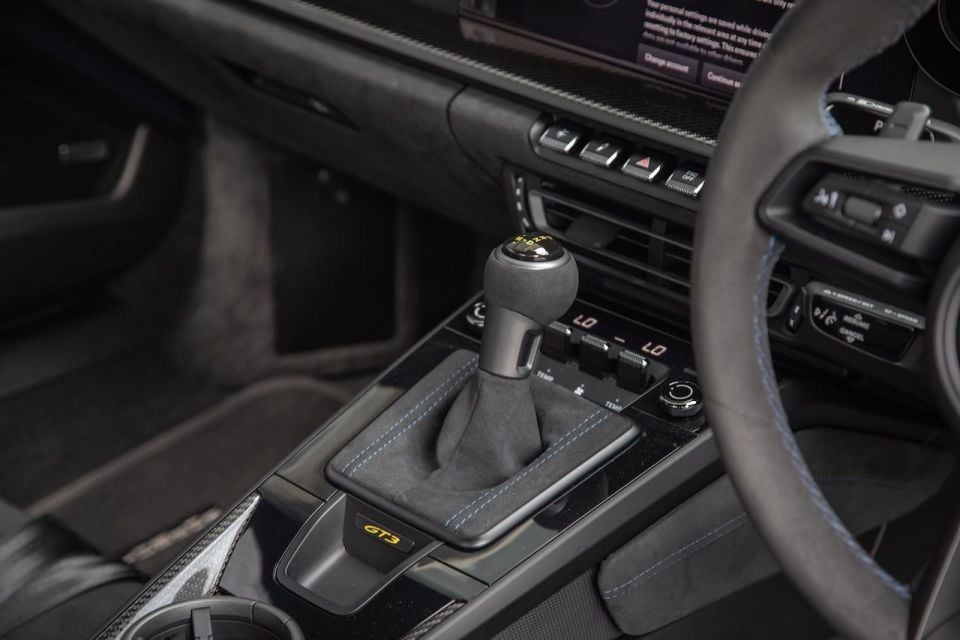
The entire cabin is virtually Alcantara from floor to ceiling: the seats, door cards, roof, lower dash, steering wheel and centre console.
There are also smatterings of lacquered carbon-fibre and the softest leather, which looks especially good with contrasting blue stitching to match the seat belts and Shark Blue exterior.
The optional lightweight full bucket seats (saving 12kg) out of the Porsche 918 Spyder are not only aesthetically spectacular, but they’re also superbly upholstered and perfectly bolstered in a combination of leather with Alcantara inserts for maximum body-grabbing during high-speed cornering.
There’s almost no need to clip into the six-point harness. Note: they’re manually adjustable as far as the seat rail goes, but seat height adjustability is electric.
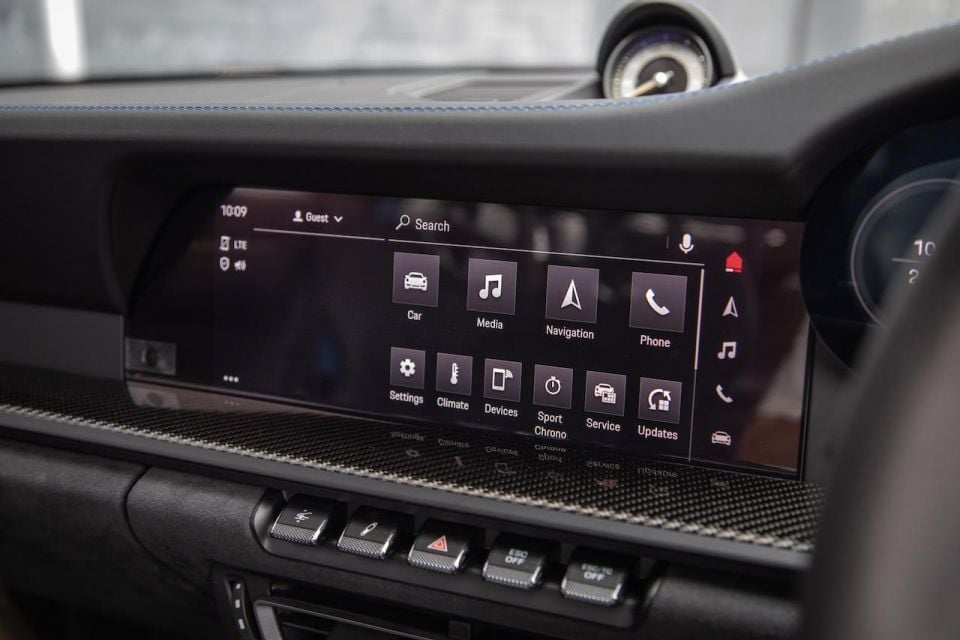
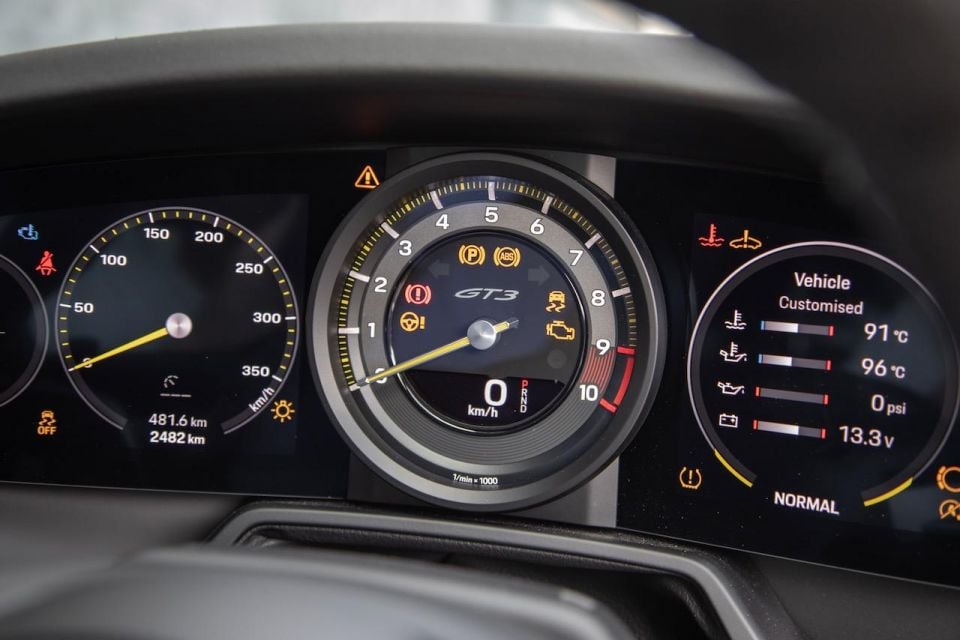
Which brings me to the 911 driving position – in a word, perfect.
Porsche has been getting it right from the very beginning, only in the GT3 it’s pretty much the same as you get in any other 992 version of the 911. There’s little or no familiarisation required even for first timers, as it feels tailor-made and as close to a race car ambiance as you’re ever likely to experience in a road car.
There’s no fancy flat-bottomed steering wheel; although, its perfectly round tiller incorporates a drive-mode dial for the first time in a GT3, allowing drivers to switch between Normal, Sport and Track. It’s not as dramatic as the Manettino controller used in Ferraris, but it’s functional and intuitive.
More importantly, the trademark centrally-positioned analogue rev counter runs up to an eye-popping 10,000rpm, a necessary measurement for the GT3 given its 4.0-litre flat-six revs to a screaming 9000rpm.
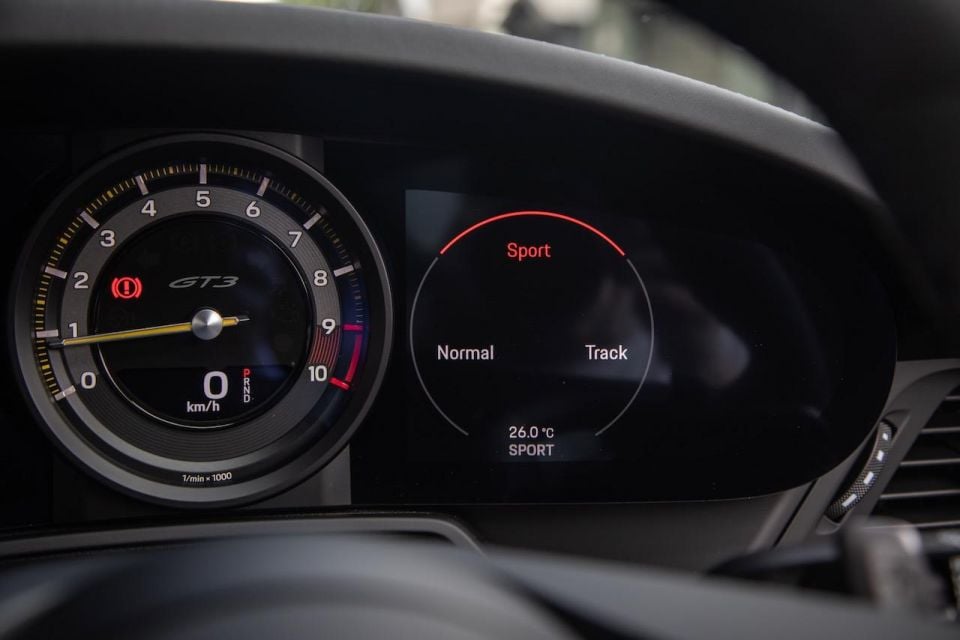
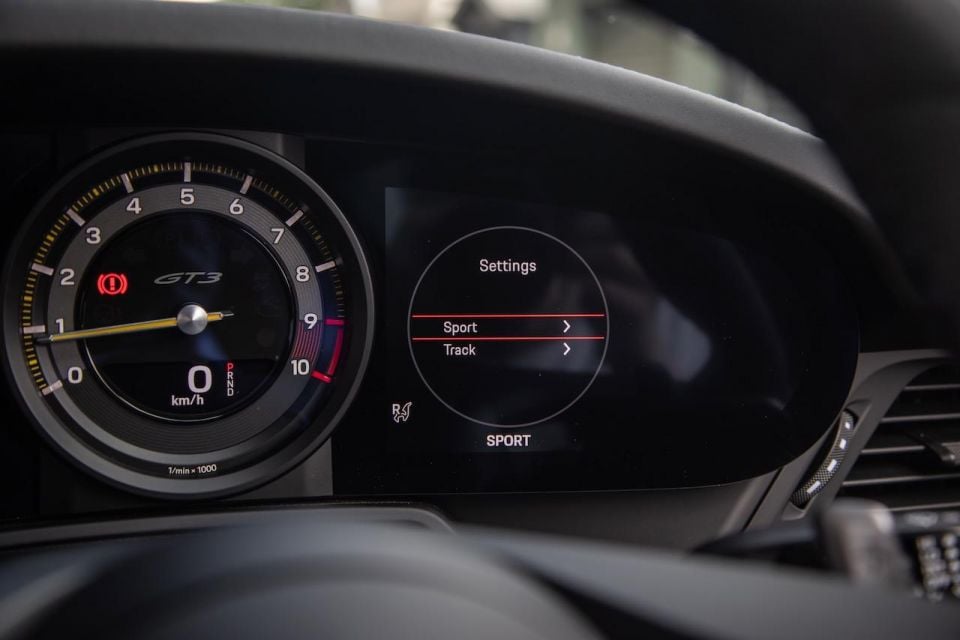
Alongside, there’s a new track screen that minimises the display to show only relevant information such as oil temperature, oil pressure and fuel level on one side, with coolant and tyre-pressure on the other – only the GT3’s system can distinguish between cold and warm tyres.
The cabin isn’t lush by any means, but it does look and feel contemporary with its 10.9-inch touchscreen which measures up to anything in its class as far as interface, response and clarity are concerned.
For those opting for the PDK transmission, the shifter cleverly mimics the six-speed manual gear lever.
It’s a cool design touch, certainly one that resonates better than the odd-looking stubby e-shifter in other 911 models that still doesn’t look or feel right to me.
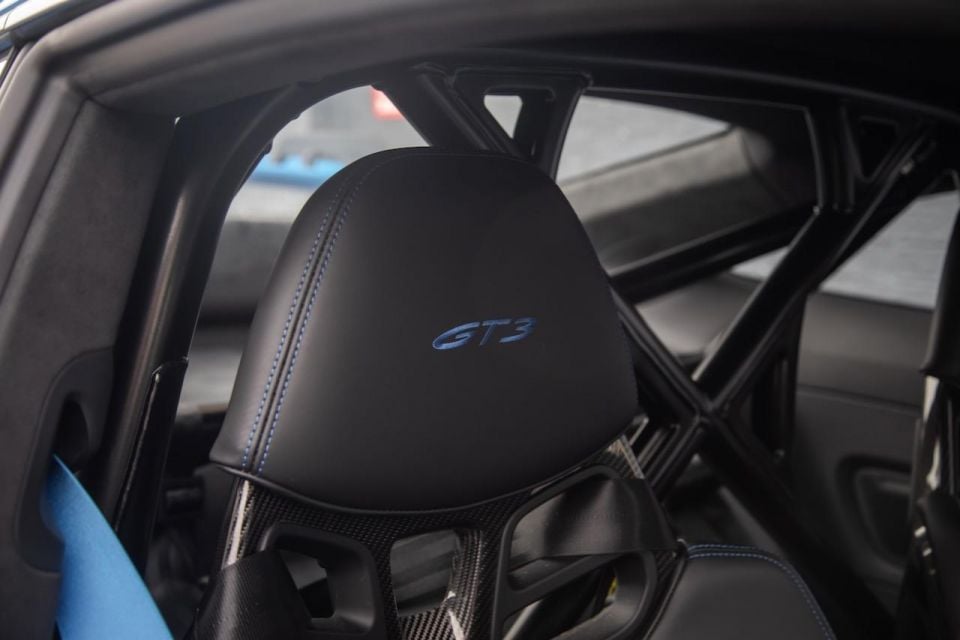
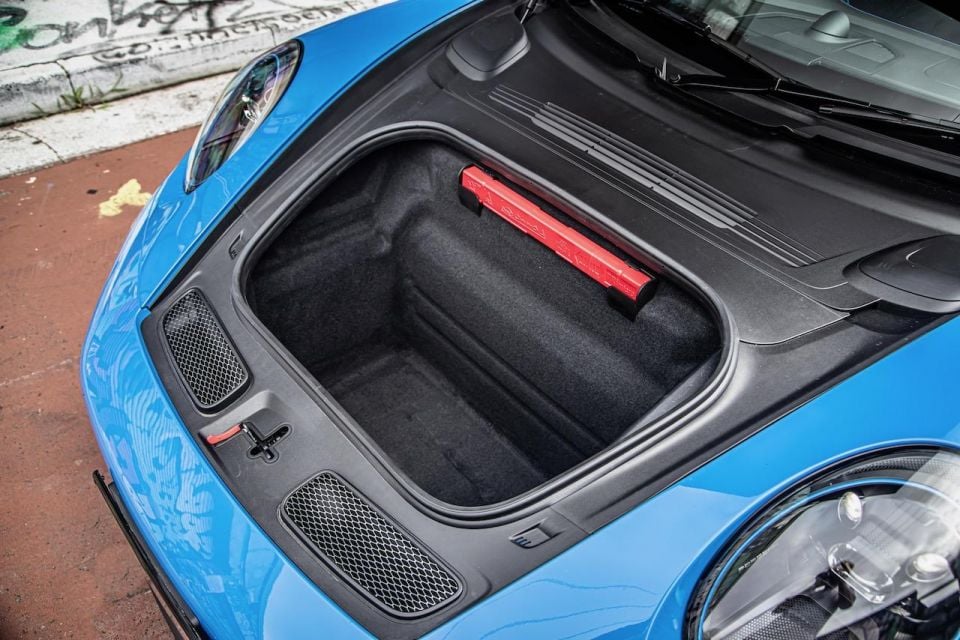
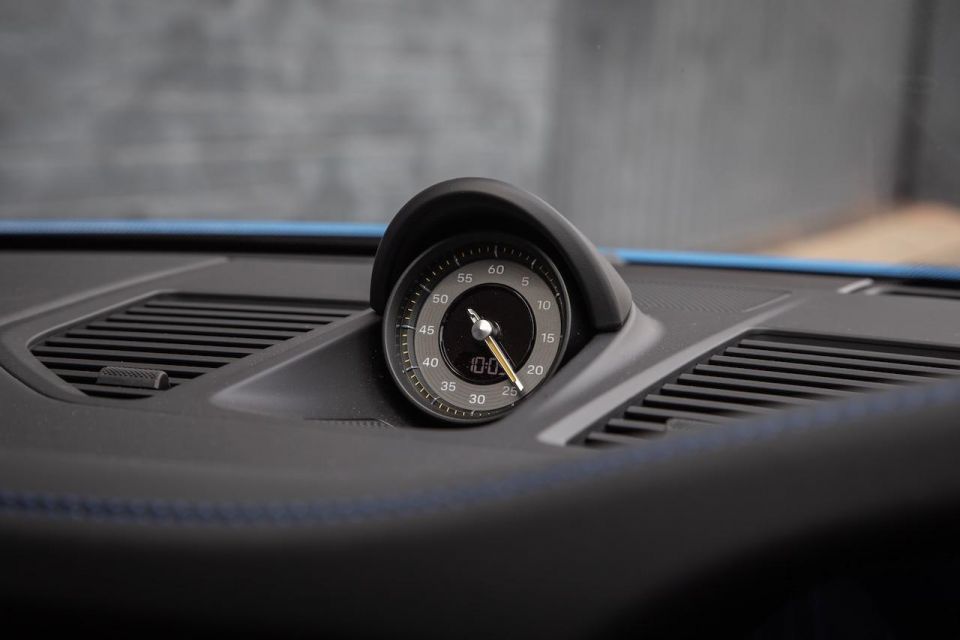
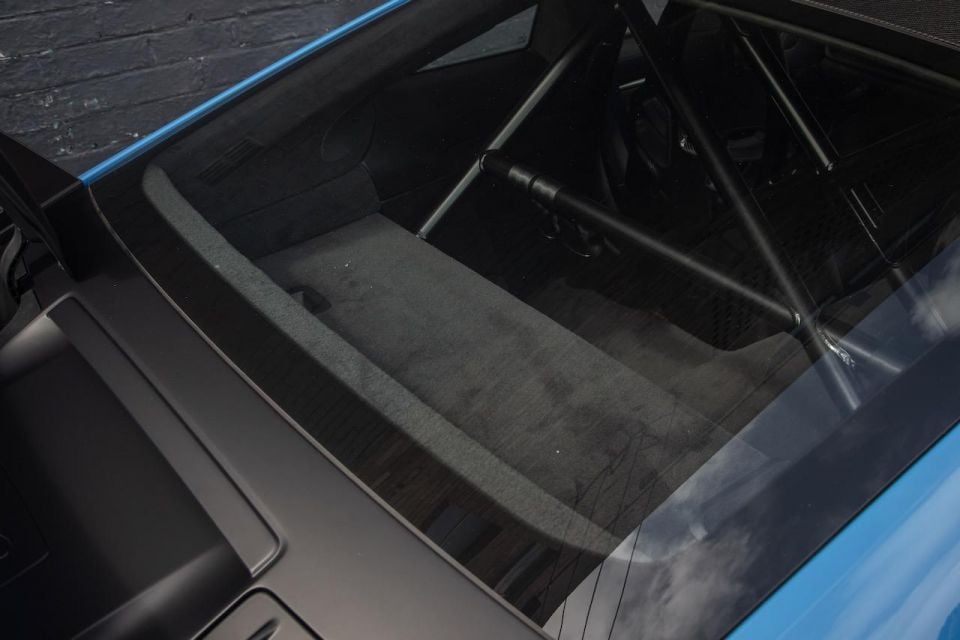
I guess they’re to maintain old-school 911 familiarity, but surely a race-red starter button is more appropriate here.
Not only does the GT3 lose the folding rear bench seats you get in the regular 911, but our tester was also fitted with the no-cost Clubsport Package which adds a bolted-on roll bar behind the front seats.
Also included is the preparation for a battery disconnect switch, a motorsport-spec hand-held fire extinguisher and that six-point harness for the driver’s seat.
Luggage space amounts to a 132-litre frunk under the bonnet (enough for two decent size soft bags), while the half cage behind the seats in our tester restricts both access and space compared with regular 911 variants.
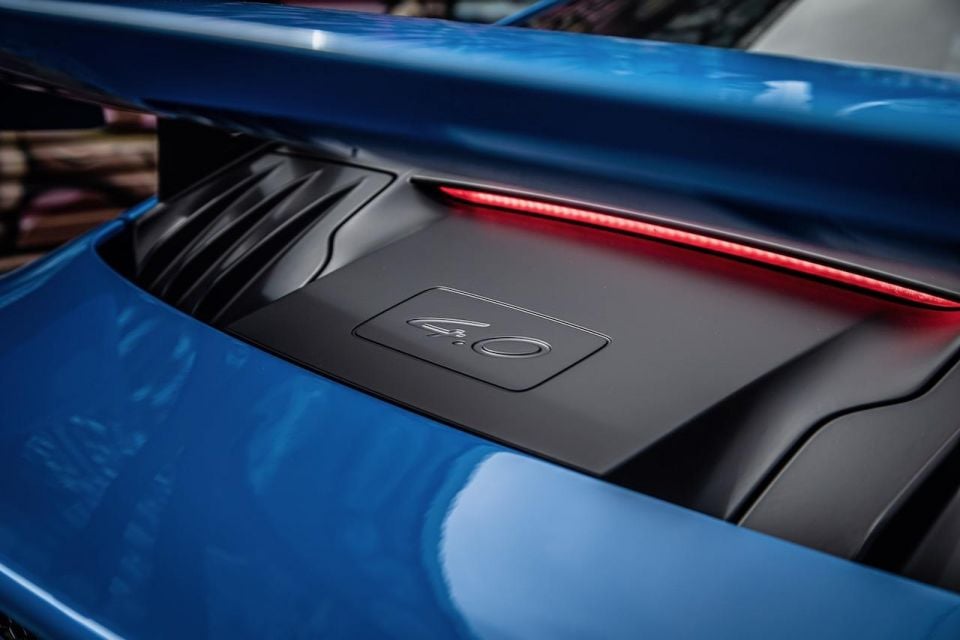
The fact that the GT3 and GT3 RS are the only non-turbo models in the entire 911 line-up is something to celebrate these days, and just goes to show you the lengths that Porsche’s GT division will go to satisfy genuine enthusiasts.
Under the rear lid there’s a 4.0-litre naturally-aspirated flat-six that has more in common with Porsche’s racing program than any other 911. It’s basically unchanged from the engine found in the 2021 911 GT3 Cup racer, but also used in the highly-prized 911 Speedster.
However, power is only up a modest 7kW to 375kW, while torque gets an equally slight 10Nm bump to 470Nm at 8400rpm. It’s enough to send the GT3 from standstill to 100km/h in 3.4 seconds and 0-200km/h in 10.8 seconds, while top speed 318km/h.
It’s a work of art from an engineering sense, given the degree of detail that’s gone into creating a naturally-aspirated flat-six capable of such extreme abuse on the track without so much as a blink.
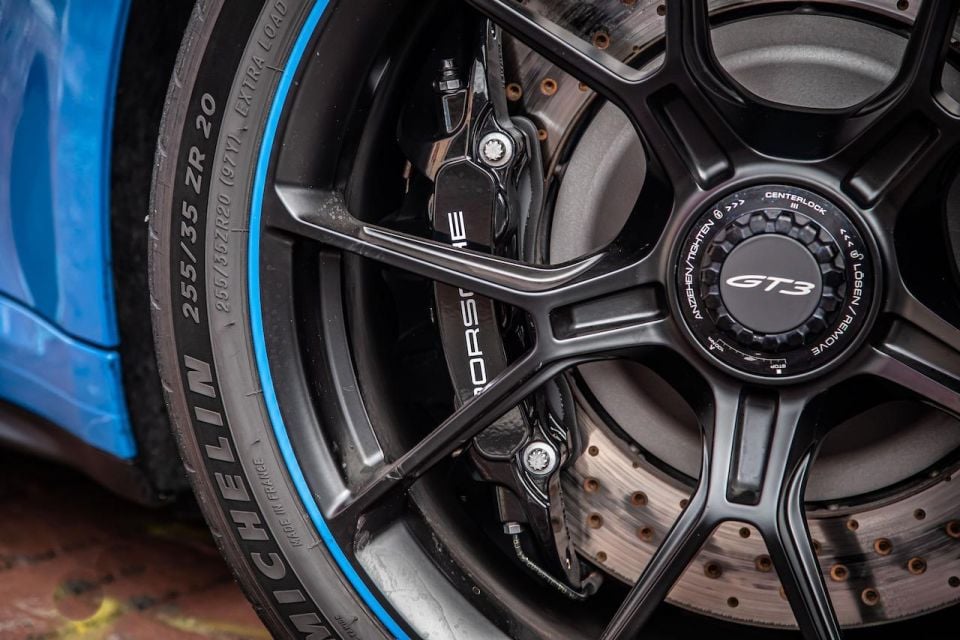
Where expert car reviews meet expert car buying – CarExpert gives you trusted advice, personalised service and real savings on your next new car.
It’s got a race-tuned intake system featuring six individual throttle bodies (one for each cylinder) at the end of a variable intake manifold that uses two switchable resonance valves for fast and accurate air flow into the engine at any engine speed.
The cylinder head valves have factory-set clearances for improved combustion and reduced maintenance, while friction losses are also reduced with larger bearings on the crankshaft, as well as wide connecting rod bearings and plasma-coated cylinder linings.
In fact, the competition version of the engine in the GT3 Cup car only requires a maintenance check after 100 hours of track time, which is downright extraordinary given the loads. It means the road-going GT3 can take on enormous loads at the limit.
For those GT3 owners concerned with fuel economy (there can’t be many), it’s a Euro 6-compliant engine that claims to deliver 12.4L/100km on the combined cycle (NEDC), with CO2 emissions measured at 283g/km on the same cycle.
Even in the burbs you tend to enjoy the GT3 whenever you get the urge, so fuel usage can often be understandably high (like 17.3L/100km) which is what we were averaging.
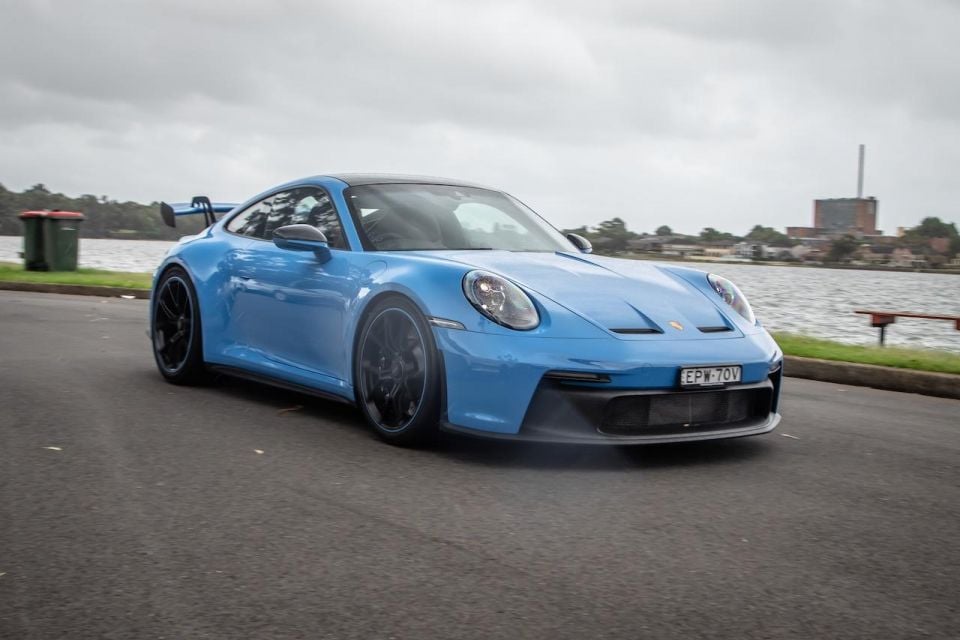
Just standing there captivated by the Shark Blue GT3 tester, and it’s hard not to think of this 911 as an out-and-out race car after knowing first-hand what it’s capable of on the full-length circuit at Sydney Motorsport Park.
It’s either a race car for the road, or a road car for the track. Both descriptions are 100 per cent accurate, which is why I was so keen to live with it as a daily.
The flat-six fires with a twist of the not-so-special key-stub with its trademark flat-six bark, the type only a 911 GT3 can make. It’s a deeper, more muscular bark than its predecessor, which matches the new look perfectly.
It’s much easier climbing in and literally falling into these seats than it is getting out, but there’s a stack of cushioning pads on which to use as leverage. No real complaints, so I’d have to go with the full-tilt buckets.

The front-lift system is a godsend, and even on gentle driveway exits you tend to raise it up just to be on the safe side.
It can lift the front axle by as much as 40mm for things like your own driveway or speed bumps, and it can store the GPS positions to automatically lift the car the next time you arrive home. No longer are unfriendly driveways an issue in the hardcore GT3.
The biggest test as a daily driver is the level of ride comfort on such a serious track performer riding on huge 21-inch wheels shod with low-profile Michelin Cup 2 tyres (315/30 ZR).
There’s also the GT3’s new double-wishbone suspension up front to consider. The design is from Formula racing cars for extra front-end stiffness and steering control under high loads through high-speed corners.
But, it also eliminates lateral forces from the shock absorbers for less disturbance and friction losses for better and more settled compliance.

The other new-found joy with life on the street in the 911 GT3 are the adaptive dampers or ‘Porsche Active Suspension Management (PASM)’. It’s been around for a few iterations but now there’s noticeably more breadth between the two baseline settings; Sport and Track.
In the new GT3 it’s 20mm lower than regular 911s, but remarkably offers more bump-absorbing compliance on the road. So even in the less-aggressive Sport mode it’s better than anyone might expect from this track-ready road racer and noticeably more compliant than its predecessor.
And, that’s on the bigger wheels and wider tyres. It’s quite remarkable just how well this thing rides over crappy roads and speed bumps. There’s really no point whatsoever in dialling up Track mode around the burbs, but you do it anyway just for comparative analysis.
It’s properly firm with corresponding race car levels of body control and chassis stiffness for those hardcore enthusiasts that might end up doing a Targa Tasmania or Targa High Country in the Touring class, but even then I reckon Sport would still be the ticket if you don’t end up setting up the ‘Individual’ driver profile.
Even in Normal throttle response is sharp enough to dispense with any and all annoyances on the daily commute, but if you’re like me you’ll choose Sport for the extra urgency you get with all the major controls including the transmission, steering and the noise from the GT3’s flat-six – butterfly valves wide open.
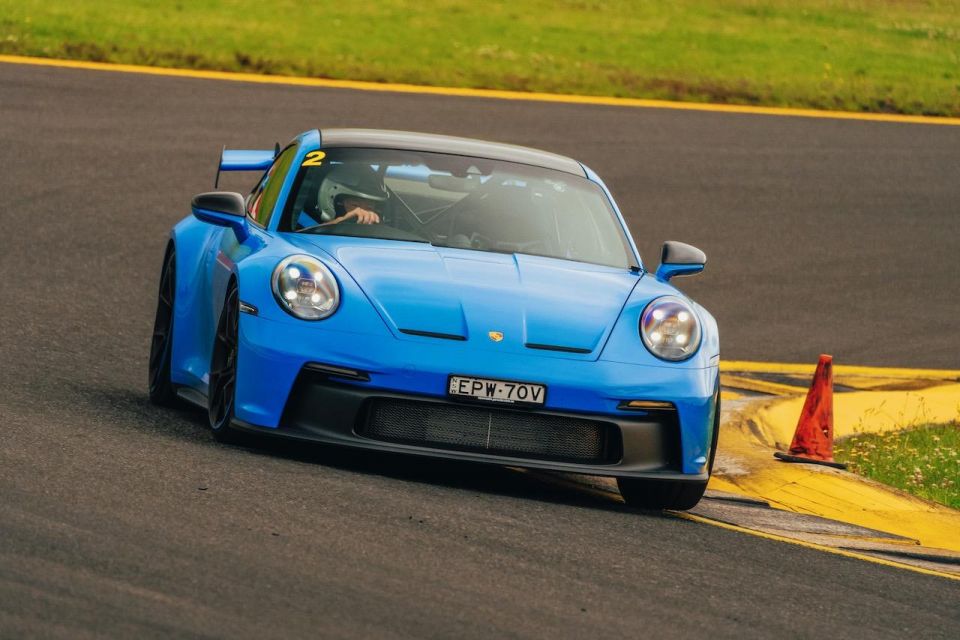
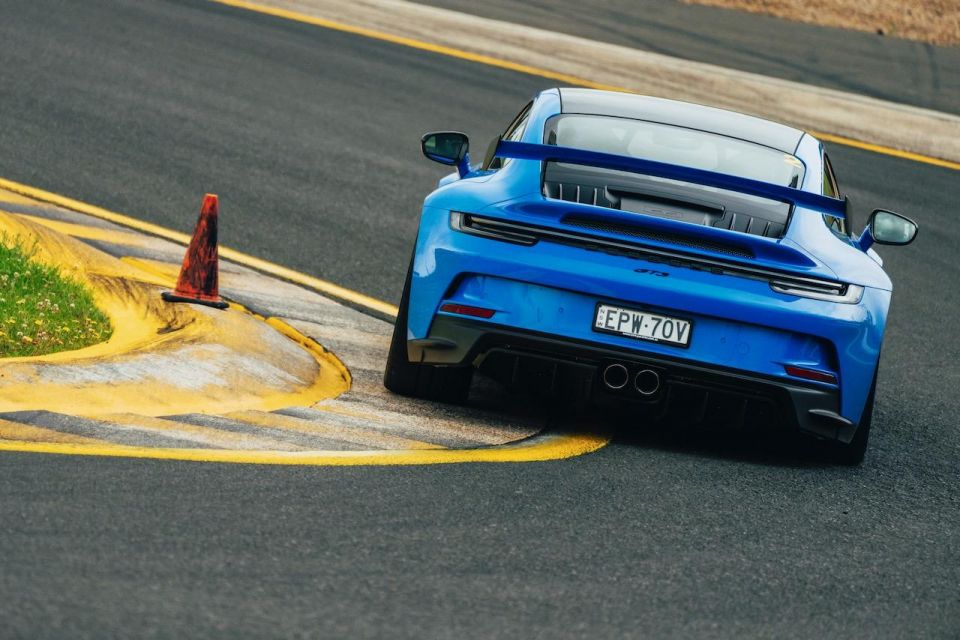
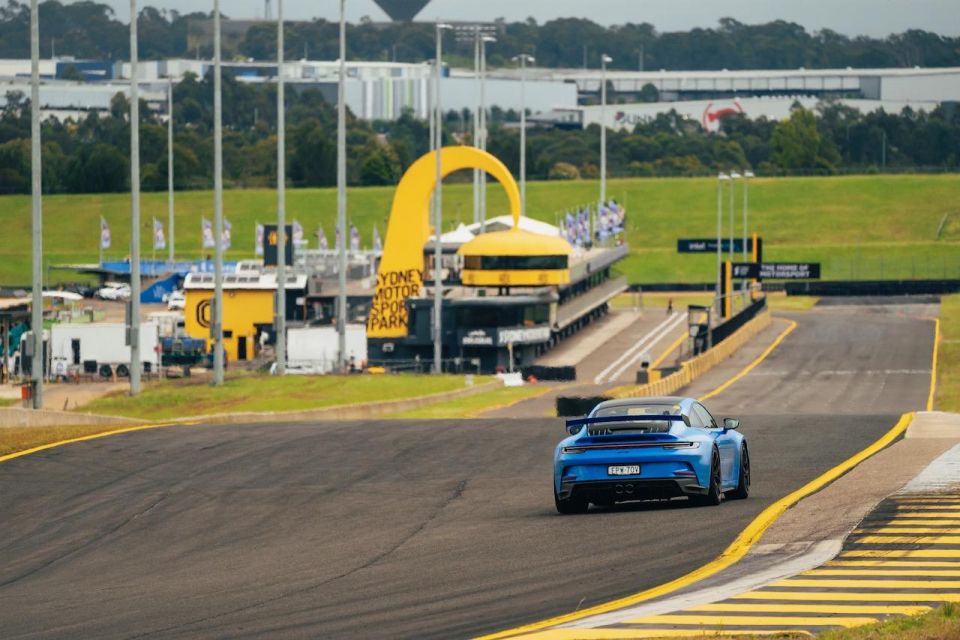

By all means use the paddle-shifters for a more involving driving experience, but there’s almost no need in Sport mode so good is the PDK’s auto-shift and throttle-blipping on downshifts.
The moment you start to push a tad harder the gearbox responds intuitively and kicks down two or three gears with impeccably-timed blips under a firm brake pedal. It’s such a good feeling even at legal speeds coming into a series of roundabouts.
I recall Luke Youlden hitting turn one at Sydney Motorsport Park at around 265km/h, and while rear-wheel grip was only just starting to teeter, at the same time you’re also in complete awe of the GT3 and the level of commitment and confidence it affords the driver.
On road, grip is understandably limitless in the dry. More care is required in the wet riding on Cup 2s, but there’s still plenty of traction under a light throttle. Not really an issue if common sense is applied.
While the GT3’s rear-wheel steering is hugely beneficial on track in the tighter corners and with corner speed in general thanks to better (and easier) car rotation, it’s also hugely beneficial around town.

There’s less arm-twirling in those roundabouts and much easier manoeuvrability in car parks if you dare venture to such places.
You won’t need the optional carbon-ceramic brakes as far as stopping power goes, because the standard 408mm front rotors (up from 380mm) are stupendous in this regard, not only for their larger diameter and higher strength but for the special air paths for better cooling.
Again, it’s not something you’ll ever need to worry about in the GT3 on road or track thanks to the car’s phenomenally light weight (1435kg dry).
As a former (991.1) 911 Carrera S owner, I can tell you categorically the GT3 is more compliant over the same surfaces, and apart from the more focused bucket seats and omission of the rear seats, it’s also practical enough to be used as a daily driver.
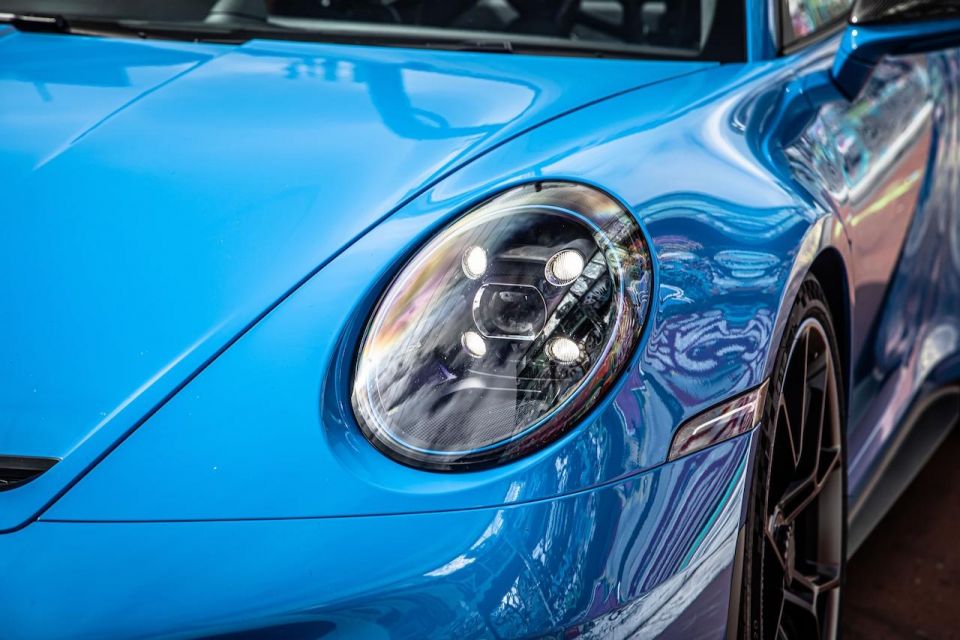

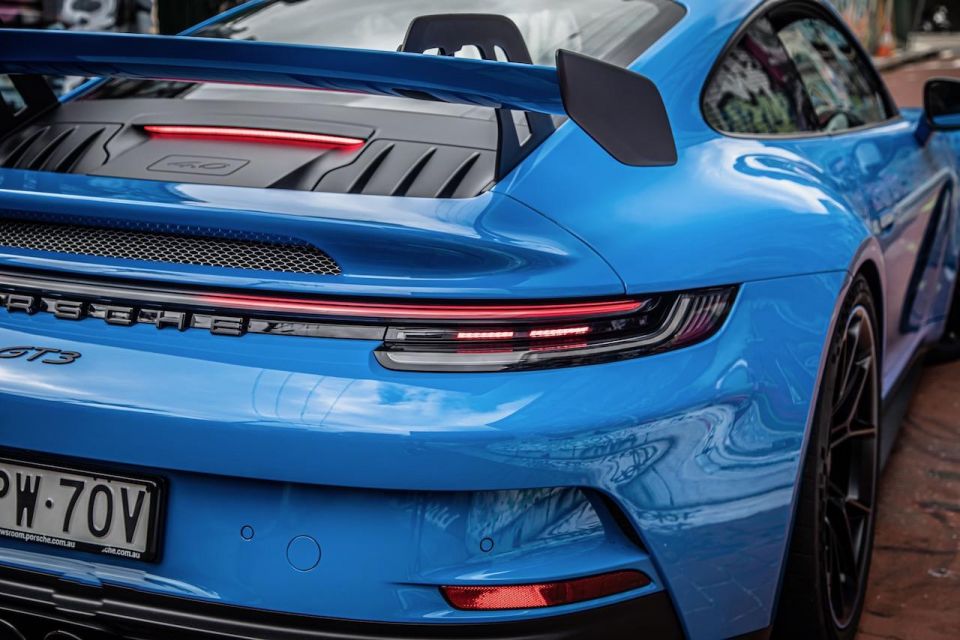

911 GT3 highlights:
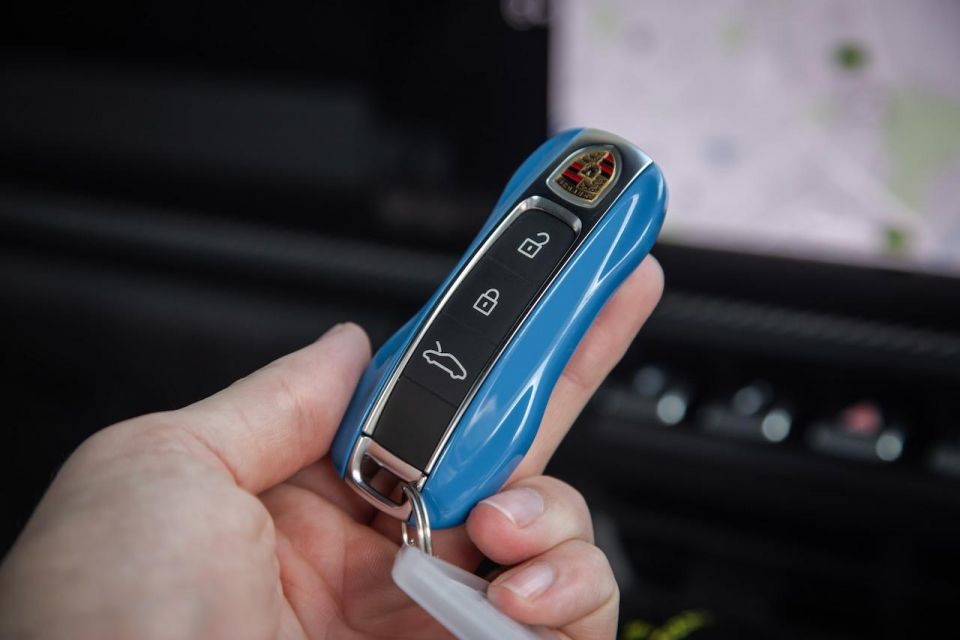

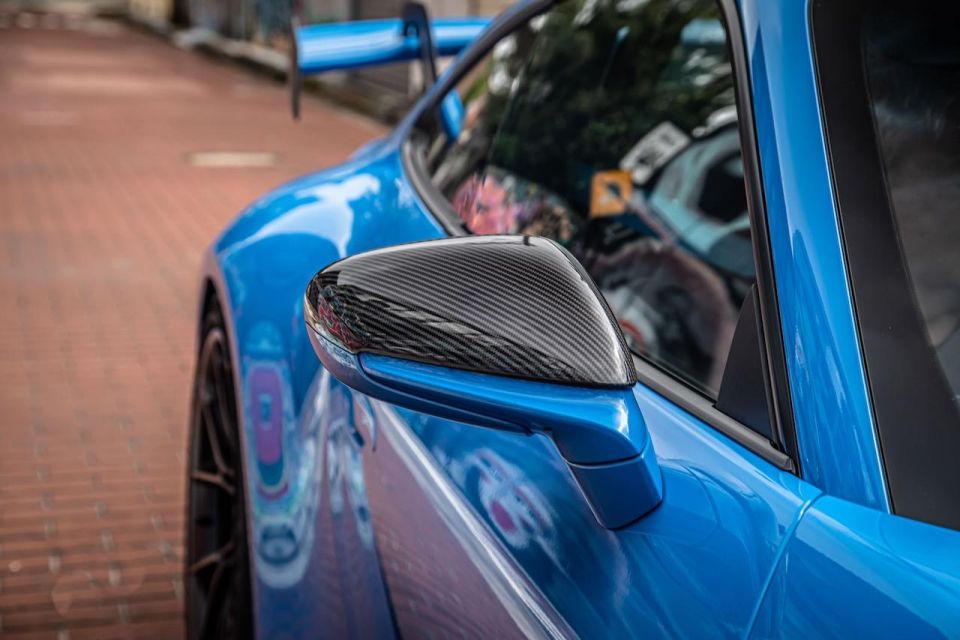

Our test car was fitted with a slew of options including:
All up, our 911 GT3 tester came to $429,590 plus on-road costs with options.
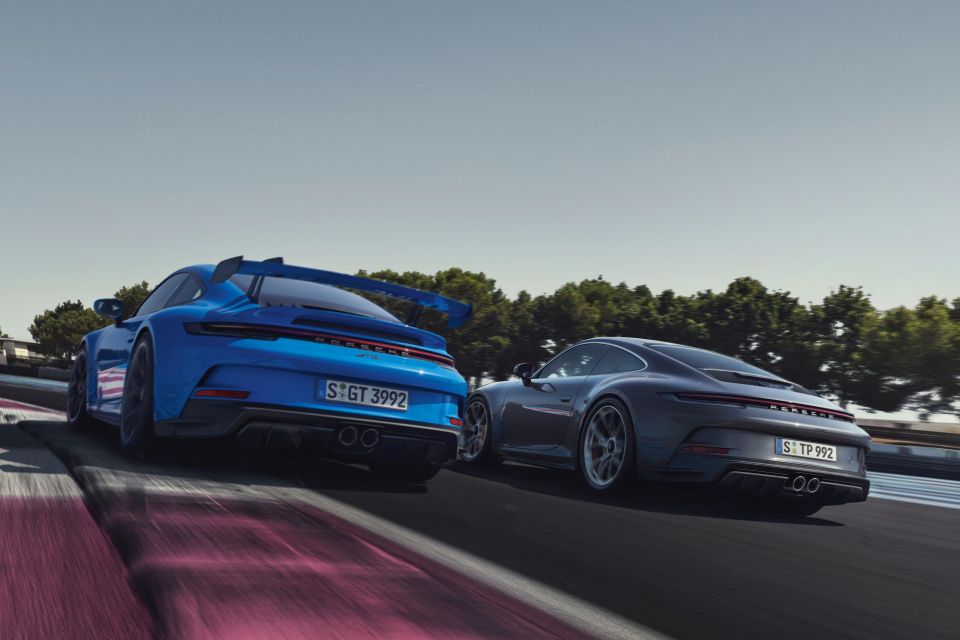
911 GT3 with Touring Package changes:
Tailpipes in Black are a no-cost option, as is the Touring exterior package, which includes window trims and side skirts in Black.




911 GT3 70 Years Porsche Australia Edition features:
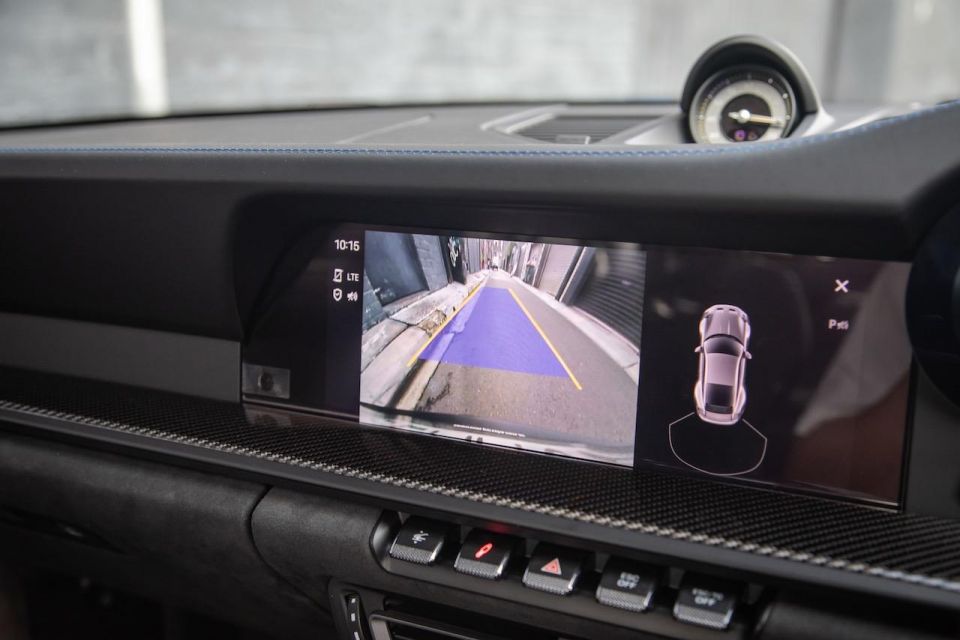
Porsche doesn’t crash test its sports cars, so there’s no ANCAP or Euro NCAP safety rating for the 911 range.
Standard safety equipment includes driver and front passenger airbags, a thorax airbag built into the side bolster of each front seat, and head airbags for each front seat.
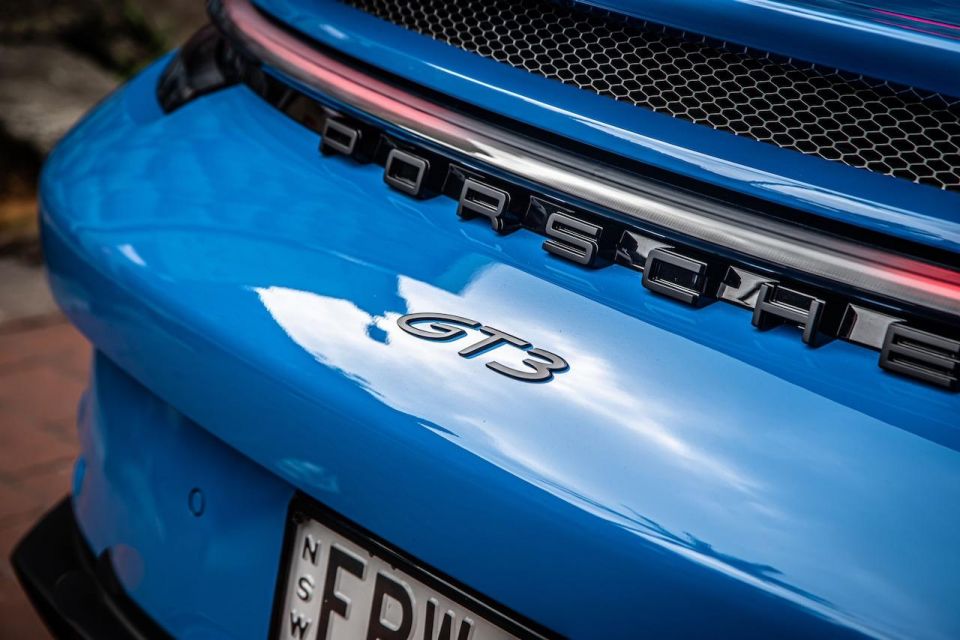
Porsche offers a three-year, unlimited-kilometre warranty across the board, as well as three-year paint warranty and 12-year rust coverage.
Service intervals are 20,000km or 12 months, whichever comes first, while service costs vary by dealer.
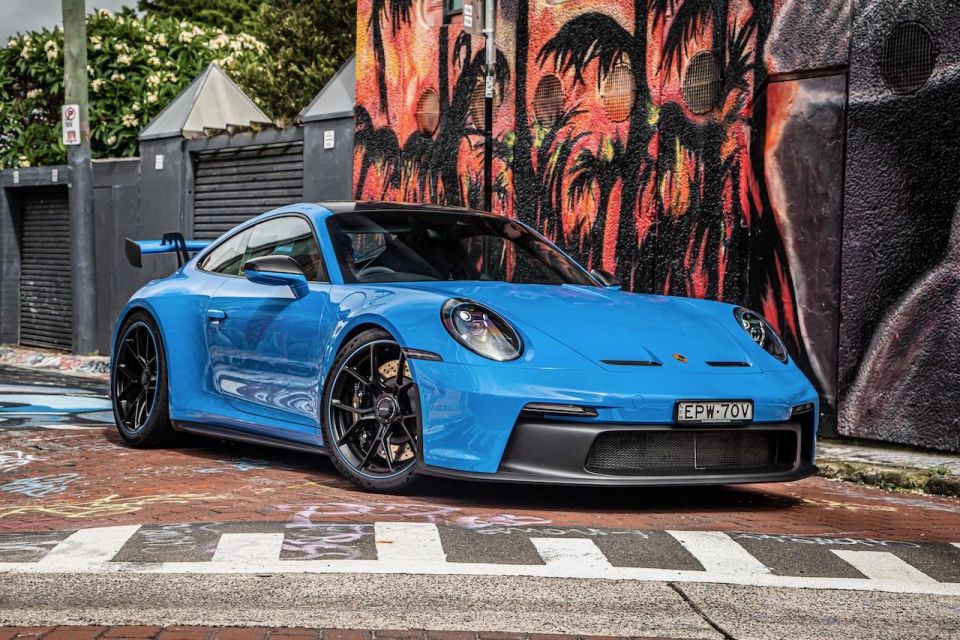
It doesn’t matter where you park a Shark Blue Porsche 911 GT3, you and everyone else around you will enjoy the eye candy element alone.
It’s an addiction you never seem to tire of. I have a personal obsession with the 21-inch, central-locking forged alloys and the swan-neck rear wing (also in Shark Blue). There are simply no bad angles here – not one.
On track, the GT3 is peerless in its all-round driveability even with a driver of modest ability behind the wheel. On road it’s almost no different to driving a regular Porsche 911, only better.
You can also cruise along knowing you’re in the most capable series-production sports car on the planet with absolutely nothing to prove. Every other driver knows that too – it’s such a good feeling.

Click an image to view the full gallery.
MORE: Everything Porsche 911
Where expert car reviews meet expert car buying – CarExpert gives you trusted advice, personalised service and real savings on your next new car.
Anthony Crawford is a CarExpert co-founder and senior presenter with 20+years in automotive journalism and content creation.


Damion Smy
17 Hours Ago
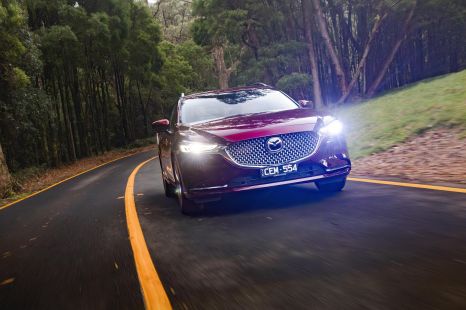

William Stopford
2 Days Ago
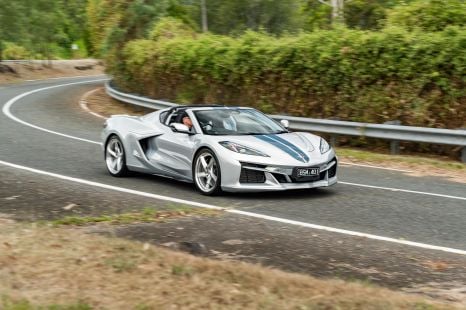

CarExpert.com.au
5 Days Ago


Derek Fung
9 Days Ago
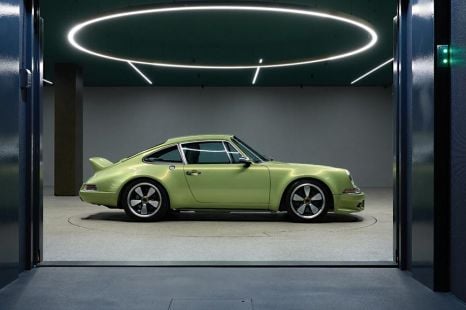

Marton Pettendy
25 Days Ago
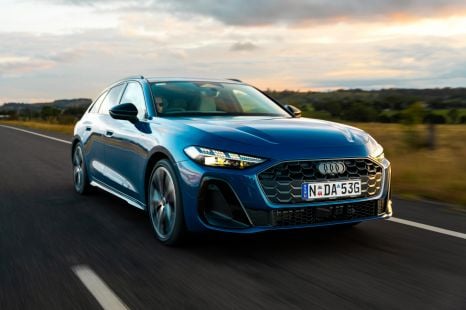

James Wong
1 Month Ago